Finding Common Denominators Worksheet
Part 1: Multiple Choice Questions
Choose the correct answer from the options given.
-
Which of the following is a common denominator for 2/5 and 3/4?
- a) 20
- b) 12
- c) 8
- d) 15
-
What is the common denominator for 1/3 and 2/7?
- a) 21
- b) 10
- c) 9
- d) 7
-
Which of the following is the smallest common denominator for 1/2 and 2/3?
- a) 3
- b) 4
- c) 6
- d) 12
-
What is the common denominator for 1/4 and 3/5?
- a) 20
- b) 10
- c) 15
- d) 12
-
Which of the following is a common denominator for 1/6 and 5/7?
- a) 42
- b) 30
- c) 21
- d) 12
-
What is the common denominator for 2/3 and 3/4?
- a) 12
- b) 8
- c) 6
- d) 24
-
Which of the following is a common denominator for 1/3 and 2/5?
- a) 15
- b) 8
- c) 10
- d) 12
-
What is the common denominator for 1/2 and 3/4?
- a) 8
- b) 4
- c) 6
- d) 12
-
Which of the following is a common denominator for 1/5 and 2/3?
- a) 15
- b) 10
- c) 5
- d) 6
-
What is the common denominator for 1/3 and 4/7?
- a) 21
- b) 10
- c) 9
- d) 7
Part 2: True or False
Indicate whether the statement is true or false.
| Statement | True or False |
|---|---|
| A common denominator is a multiple of the denominators of two or more fractions. | |
| To find a common denominator, you need to find the least common multiple of the denominators. | |
| When adding or subtracting fractions, you need to have the same denominator. | |
| You can always find a common denominator for any two fractions. | |
| When finding a common denominator, you only need to consider the denominators of the fractions. |
Part 3: Fill in the Blanks
Fill in the blanks with the correct word or phrase.
- To add or subtract fractions, you need to find a ____ denominator.
- A common denominator is a multiple of the ____ of the fractions’ denominators.
- The least common multiple is also known as the ____ common multiple.
- To find the least common multiple, you need to list the ____ of each number and find their common factors.
- When adding or subtracting fractions, you need to have the same ____.
Part 4: Problem Solving
Solve the following problems.
- Rachel has 2/5 of a pizza left, and John has 3/4 of a pizza left. What is the smallest amount of pizza they can have if they want to split it evenly?
- If 3/4 of a class are boys and 5/6 of the boys have brown hair, what fraction of the class are boys with brown hair?
- A recipe calls for 1/2 cup of sugar and 3/4 cup of flour. What is the smallest amount of each ingredient you can measure out if you want to make 3 batches of the recipe?
- If a tank can hold 3/5 of a gallon of water and another tank can hold 1/2 of a gallon of water, what is the smallest amount of water you can measure out if you want to fill both tanks equally?
- A group of friends order 2/3 of a large pizza and 1/4 of a small pizza. What is the smallest amount of pizza they can have if they want to split it evenly?
Part 5: Essay Questions
Answer the following essay questions in complete sentences.
- What is a common denominator? How do you find a common denominator for two or more fractions?
- Why is it important to have a common denominator when adding or subtracting fractions? What happens if you don’t have a common denominator?
- Can you always find a common denominator for any two fractions? Why or why not? What is the easiest way to find a common denominator?
- What is the least common multiple? How do you find the least common multiple of two or more numbers?
- Give an example of a real-life situation where you might need to find a common denominator. How would you solve the problem?



